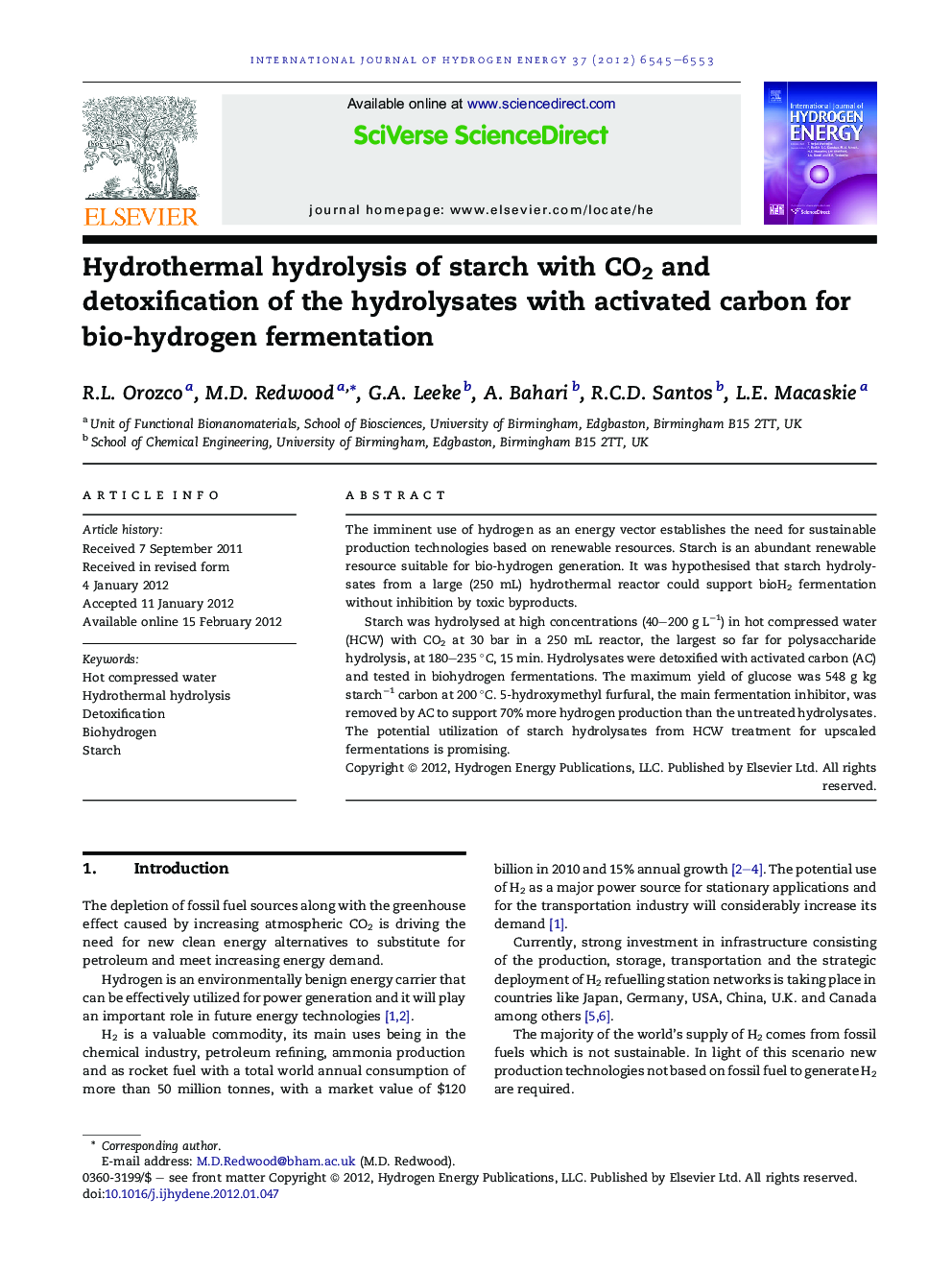| Article ID | Journal | Published Year | Pages | File Type |
|---|---|---|---|---|
| 1276594 | International Journal of Hydrogen Energy | 2012 | 9 Pages |
The imminent use of hydrogen as an energy vector establishes the need for sustainable production technologies based on renewable resources. Starch is an abundant renewable resource suitable for bio-hydrogen generation. It was hypothesised that starch hydrolysates from a large (250 mL) hydrothermal reactor could support bioH2 fermentation without inhibition by toxic byproducts.Starch was hydrolysed at high concentrations (40–200 g L−1) in hot compressed water (HCW) with CO2 at 30 bar in a 250 mL reactor, the largest so far for polysaccharide hydrolysis, at 180–235 °C, 15 min. Hydrolysates were detoxified with activated carbon (AC) and tested in biohydrogen fermentations. The maximum yield of glucose was 548 g kg starch−1 carbon at 200 °C. 5-hydroxymethyl furfural, the main fermentation inhibitor, was removed by AC to support 70% more hydrogen production than the untreated hydrolysates. The potential utilization of starch hydrolysates from HCW treatment for upscaled fermentations is promising.
► Starch was hydrolysed in hot compressed water supplemented with CO2. ► CO2 enhanced sugar generation from starch but also increased levels of toxic 5-HMF. ► Activated carbon removed 5-HMF from hydrolysates without affecting sugars. ► Detoxified hydrolysates made more H2 in fermentation with Escherichia coli HD701. ► Study of the larger, scalable reactor moves towards practical hydrolysis in HCW/CO2.
